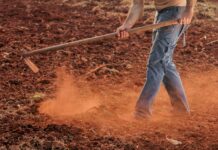Weather is the single most important variable in determining the success of agriculture and its contribution to the economy. The new agriculture season started on a positive note with good early seasonal rains across the country and forecasting advising that we are indeed in a La Nina year. The La Nina is a weather pattern that is characterised by above normal rainfall conditions across Southern Africa.
The combination of the bullish weather outlook and strong commodity prices spurred farmers to plant more summer grain and oilseed crops during the 2021/22 production season. Total summer crop area is expected to top 3.12 million hectares, which is 7% higher relative to the 2020/21 production season.
Assuming better than average yields on the back of the bullish weather outlook and the 6% and 17% y/y increase in planted area of the country’s two major summer crops respectively, South Africa is likely to produce a new record of more than 17m tons of maize and 2.22 million tons of soybeans.
From horticulture crops to livestock, all agriculture commodities are expected to perform well during the 2021/22 production season. This comes on the back of another good 2020/21 season which saw the country’s priced export commodity group, citrus, topping 161.6 million cartons exported in 2021 which is 13% higher y/y despite a tough trading environment of the Covid-19 induced global supply chain challenges, as well as the July 2021 unrest. Meanwhile, the 3Q21 exports rose by 8% y/y led by gains in amongst others citrus, maize, wine, sugar, other fruits, and nuts. Although harvesting of summer grains and oilseeds is normally subdued in the 3Q, exports have been relatively been robust with maize shipments increasing by 32% q/q amidst relatively high commodity prices and a weaker exchange rate. We expect another stellar export performance on renewed global demand as major economies gradually reopen.
Although Statistic South Africa’s last update on the country’s overall real GDP for 3Q2021 showed the biggest surprise of a sharp contraction of 13.6% q/q in agriculture GDP outcomes and a contribution of -0.4 of a percentage point to GDP growth, it was not a concern and we expected a strong rebound in the last quarter of 2021.
On overall sector confidence, the last Agbiz-IDC Agribusiness Confidence index cruised to a second record high since 2001 at 74 points which to some extent downplays the recent challenges of high input costs and the July unrest.
Thus, we maintain the view that the agriculture sector will rebound in the last quarter and post a strong overall 2021 performance above 7% on the back of the relatively higher agriculture commodity prices and another excellent seasonal outlook following the 2020/21 bumper harvests.
The only downside is that while producers appreciate the strong commodity prices from meat to grains, cost pressures have been unrelenting and kept on mounting with a surge in fuel and feed costs. For intensive livestock feeders, the price of raw maize which is a major livestock feed ingredient remained elevated despite the record harvest and the bullish seasonal outlook boosted by the strong La Nina weather pattern.
The nearby Mar-22 maize futures for both the white and yellow categories recently topped R3,584/ ton and R3879/ ton respectively, which is 12% and 23% above the 2020 levels. The price of agrochemicals such as fertilizer, herbicides, and pesticides surged by over 50% y/y across most product types which will ultimately squeeze profit margins. Nonetheless, the strong commodity prices will to some extent offset the impact of higher input costs on sector performance.








